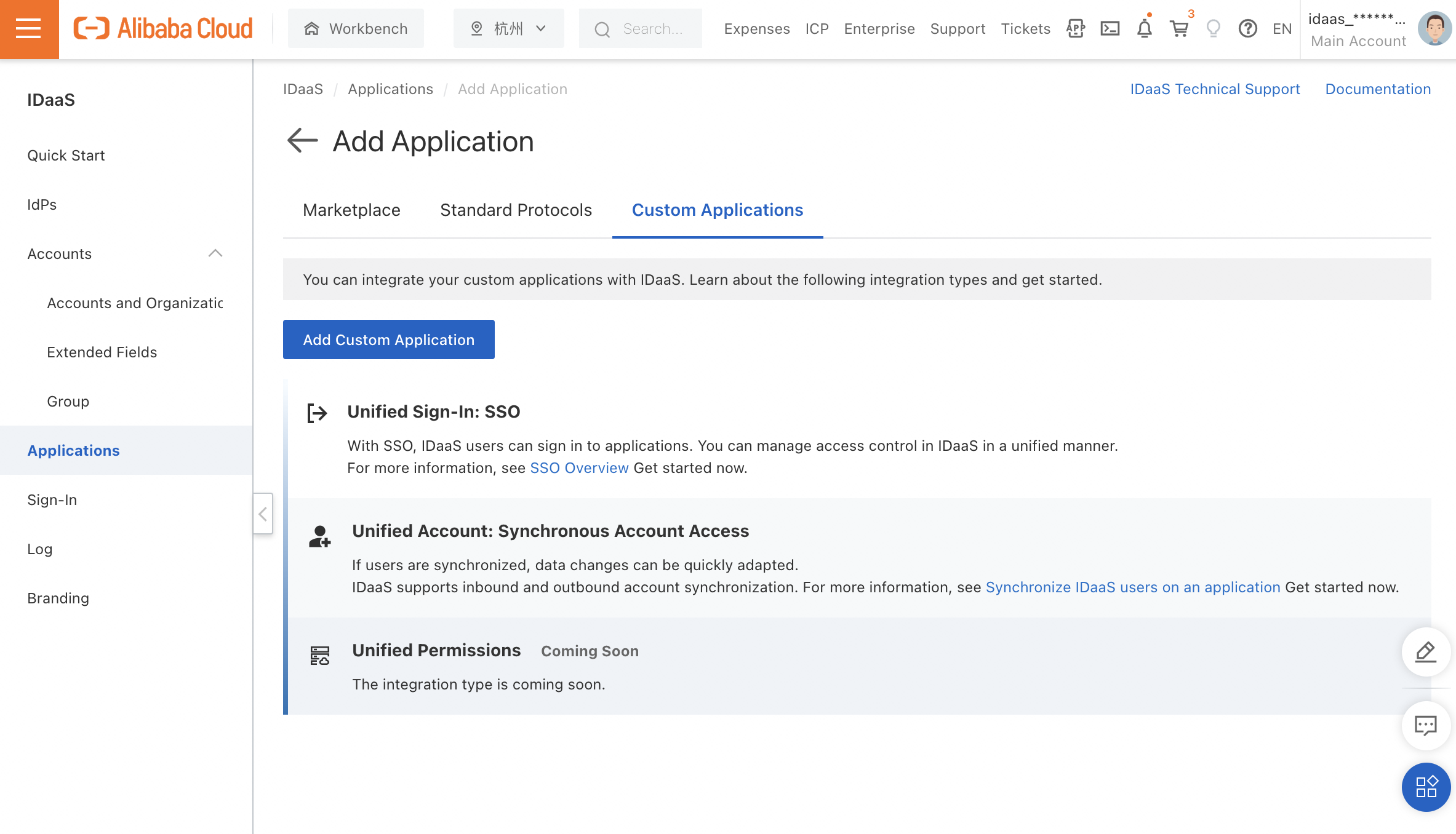An enterprise typically has a series of custom applications to support its business processes.
Administrators can add custom applications to IDaaS and connect the applications to IDaaS by performing the steps described in the IDaaS documentation.

Integration levels of custom applications
IDaaS allows you to integrate the identity system of a custom application of your enterprise with IDaaS at three levels. We recommend that you verify the integration requirements from top to bottom.
Integration level | Description | Benefits |
Level 1: unified sign-in | Implement single sign-on (SSO). Integrate the Open ID Connect (OIDC) protocol to configure application accounts and grant access to the application. Allow enterprise accounts in IDaaS to log on to the application by using SSO. Development documentation: Configure SSO for custom applications. | An employee navigates through all applications by using one set of login credentials. Unified authorization, management, and behavior audit. |
Level 2: unified accounts | Implement account synchronization. Interface with the IDaaS synchronization API to eliminate identity silos. Development documentation: Configure account synchronization for custom applications. | All modifications to the account data are synchronized to IDaaS. This makes account management easy and improves productivity. |
Level 3: unified permissions (not supported) | Implement permission hosting. Use the standard, flexible Role-Based Access Control (RBAC) model of IDaaS to host roles, menus, and features in applications in IDaaS for centralized permission management. | Realize fine-grained access control and standardize access permissions within the enterprise. Reduce the cost for developing complex and costly permission systems for custom applications. |


























